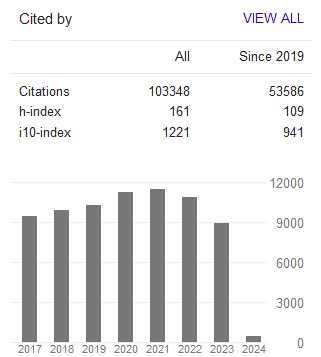Commercial Banks Profitability Position: The Case of Tanzania
- Xuezhi Qin
- Pastory Dickson
Abstract
The study examines commercial banks profitability in Tanzania for the period of ten years (2000-2009).The
study used National Microfinance Bank (NMB), National Bank of Commerce (NBC) and CRDB as the case
study. The study employed the profitability measures of commercial banks, and the evidence of performance in
terms of profitability was established based on return on average asset, net interest income to average bearing
assets and non-interest expenses to average assets. The paper utilized panel secondary data from National bank
of commerce, CRDB and National Microfinance bank in Tanzania for the period of ten years, and the hypothesis
was tested to know whether there is a significant difference in terms of profitability by using ANOVA test.
Finally the regression model was run to see the effects of capital adequacy, liquidity and asset quality on the
profitability of commercial banks. The findings revealed that there is no significant difference on profitability
among the commercial banks, in the context of regression model it has been noted that liquidity and asset quality
has positive impact in profitability with exception to the level of nonperforming loans which has a negative
influence on profitability. Also capital adequacy has shown negative impact on profitability. The study
confirmed the profitability of commercial banks to stable and meeting the regulatory requirement of the Bank of
Tanzania (BOT).
- Full Text:
 PDF
PDF
- DOI:10.5539/ijbm.v7n13p136
Journal Metrics
Google-based Impact Factor (2023): 0.86
h-index(2023): 152
i10-index(2023): 1168

Index
- Academic Journals Database
- AIDEA list (Italian Academy of Business Administration)
- ANVUR (Italian National Agency for the Evaluation of Universities and Research Institutes)
- Berkeley Library
- CNKI Scholar
- COPAC
- EBSCOhost
- Electronic Journals Library
- Elektronische Zeitschriftenbibliothek (EZB)
- EuroPub Database
- Excellence in Research for Australia (ERA)
- Genamics JournalSeek
- GETIT@YALE (Yale University Library)
- IBZ Online
- JournalTOCs
- Library and Archives Canada
- LOCKSS
- MIAR
- National Library of Australia
- Norwegian Centre for Research Data (NSD)
- PKP Open Archives Harvester
- Publons
- Qualis/CAPES
- RePEc
- ROAD
- Scilit
- SHERPA/RoMEO
- Standard Periodical Directory
- Universe Digital Library
- UoS Library
- WorldCat
- ZBW-German National Library of Economics
Contact
- Stephen LeeEditorial Assistant
- ijbm@ccsenet.org
